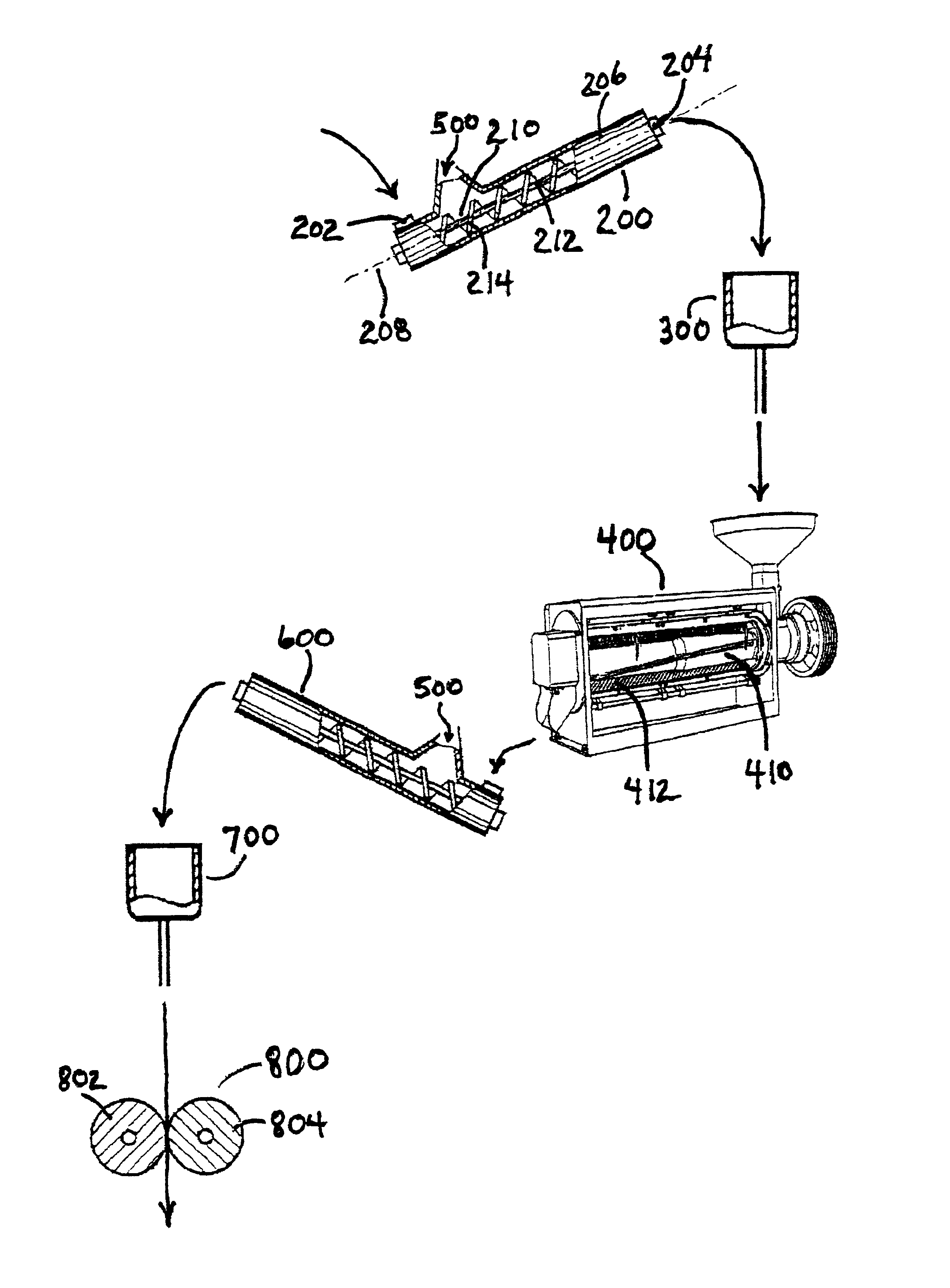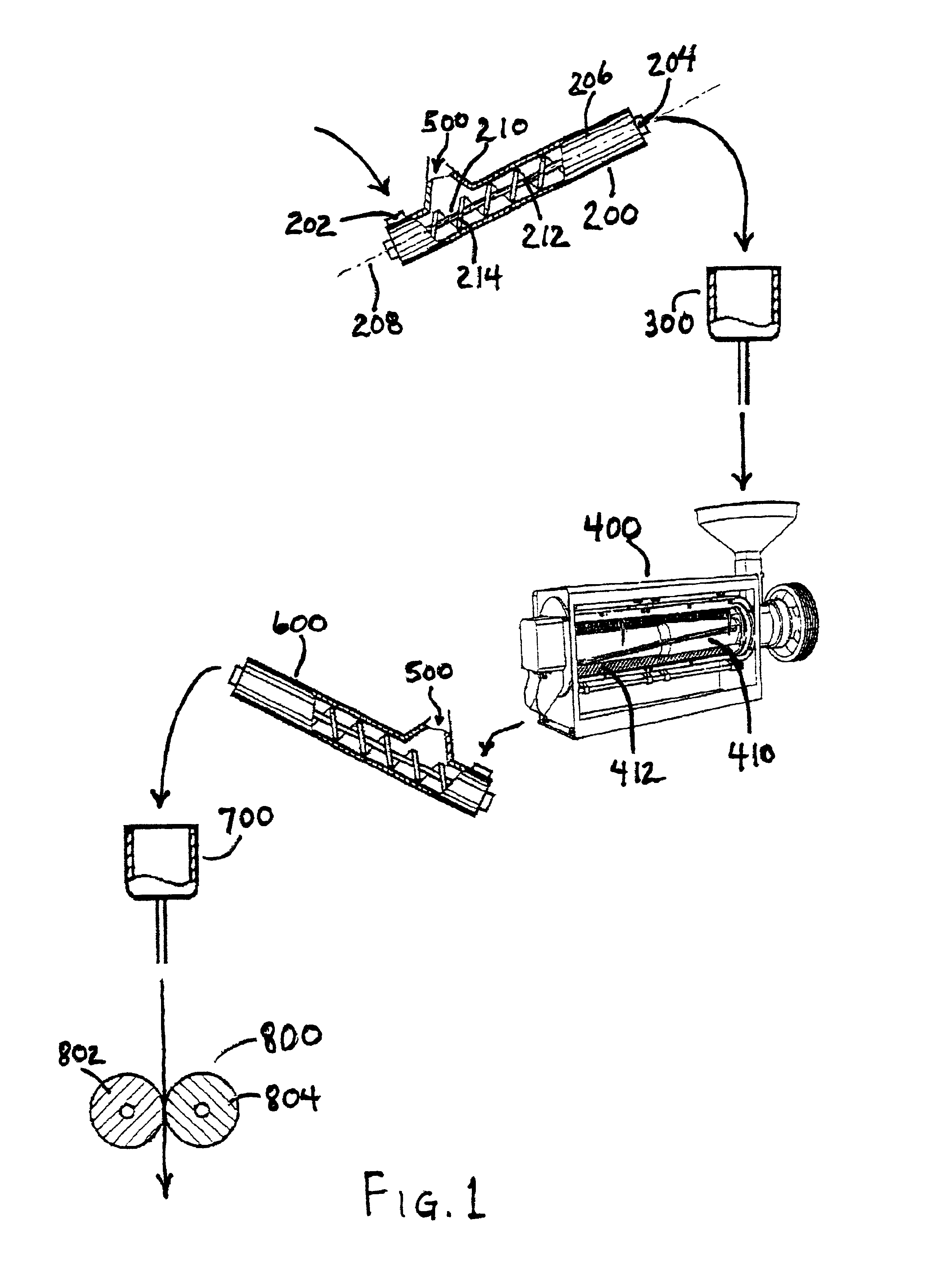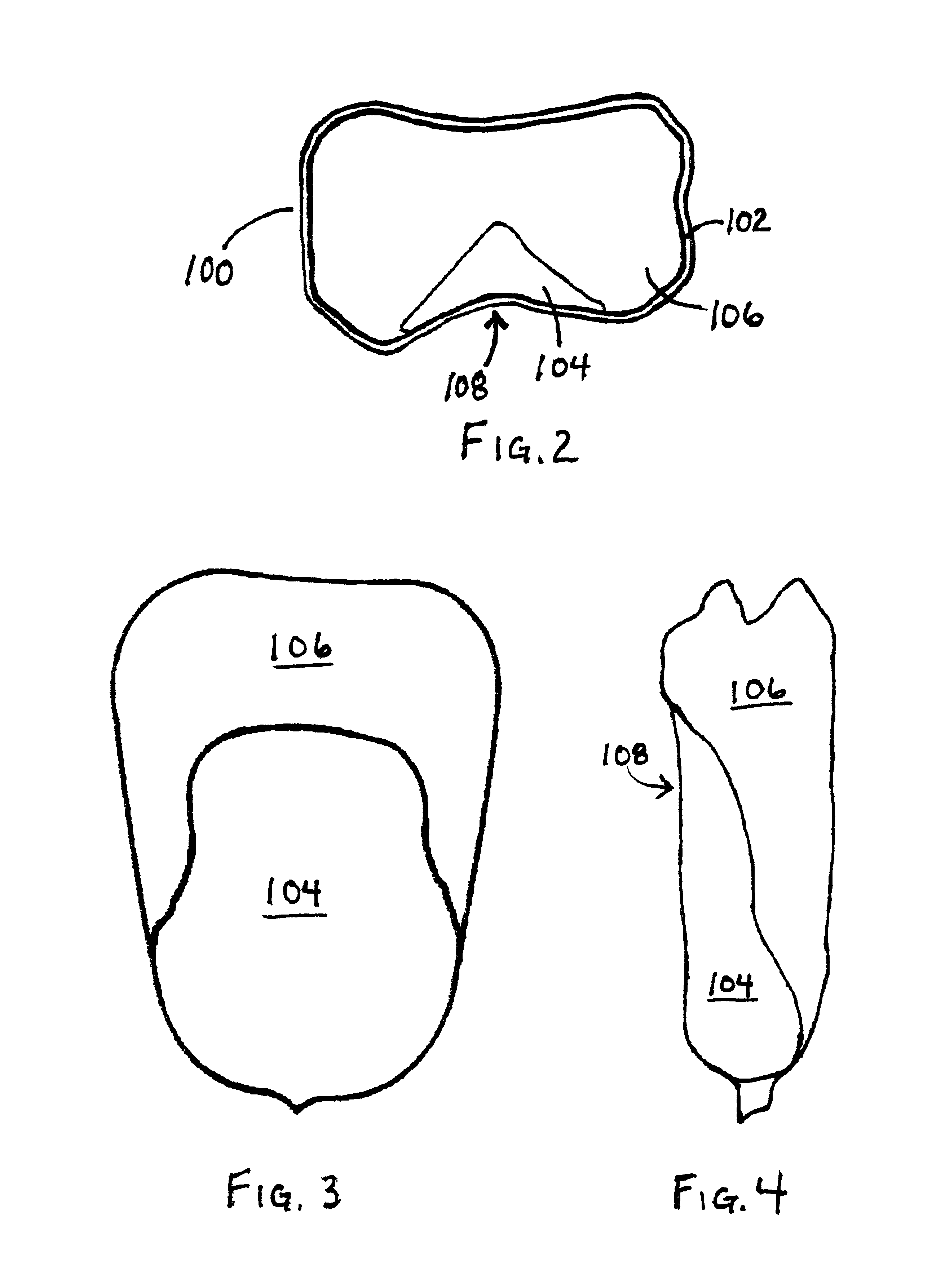Corn degermination process
a degermination process and corn technology, applied in the field of corn milling, can solve the problems of reducing the overall affecting the quality of corn products, and breaking of most kernels, so as to maximize the yield of low-fat corn products, increase the production of large particles, and improve the value of products
- Summary
- Abstract
- Description
- Claims
- Application Information
AI Technical Summary
Benefits of technology
Problems solved by technology
Method used
Image
Examples
example
[0043]In the first step, water is added to a fixed quantity of whole corn kernels. The wetted corn kernels are allowed to rest for ten minutes prior to being introduced to a Mist Polisher (Model KB40G) at a controlled feed-rate of 6000 pounds per hour.
[0044]With a 2 mm×15 mm slotted screen installed in the polisher, two distinct stock separations—overtails and throughs—are generated. The overtails, referring to the product not allowed to pass through the 2 mm×15 mm screen, consist of whole corn kernels (endosperm and germ) and is relatively bran free. Overtails constitute 82.5% of the processed corn. The germ of the corn is still largely intact within the endosperm. The overtails pass to the second tempering stage. The throughs, referring to the product that passes through the 2 mm×15 mm screen, constitute 17.5% of the processed corn.
[0045]Analysis of the throughs shows that the 17.5% of the total corn stock consists of coarse bran, fine bran and pieces of endosperm grit. Sifting an...
PUM
 Login to View More
Login to View More Abstract
Description
Claims
Application Information
 Login to View More
Login to View More - R&D
- Intellectual Property
- Life Sciences
- Materials
- Tech Scout
- Unparalleled Data Quality
- Higher Quality Content
- 60% Fewer Hallucinations
Browse by: Latest US Patents, China's latest patents, Technical Efficacy Thesaurus, Application Domain, Technology Topic, Popular Technical Reports.
© 2025 PatSnap. All rights reserved.Legal|Privacy policy|Modern Slavery Act Transparency Statement|Sitemap|About US| Contact US: help@patsnap.com



